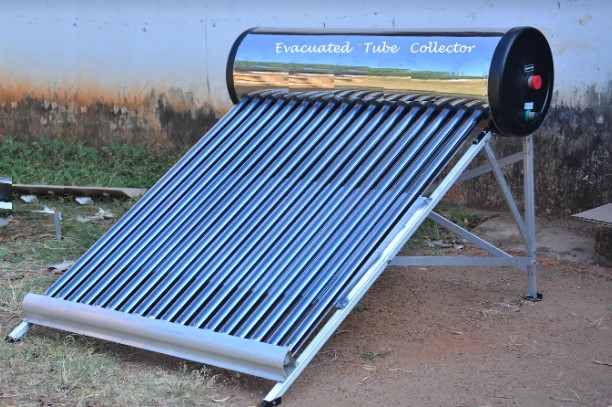Highlights :
Managing Director at Malaviya Solar Energy Consultancy, Board Director. International Solar Energy Society & Secretary General, Solar Thermal Federation of India, Jaideep Malviya chats to SaurEnergy about the opportunity in Solar Thermal Heating


Jaideep Malviya
Jaideep Malviya is a familiar site for all solar industry professionals and those who track the sector in India. A veteran of the solar movement who shifted his focus towards niche but critical segments like Solar Thermal heating and solar recycling, Malviya has been a passionate advocate for India to adopt these more aggressively. Here, he talks to SaurEnergy about the case for using Solar Water Heating more widely.
Where does Indian market stand today globally?
For the past 15 years India has been maintaining its position amongst the top ten markets in Solar thermal heating largely from Solar Water heaters (SWH). SWH market is maintaining consistent annual average of 1 million m2. Solar thermal community cooking is also fast growing.
What latest developments are taking in Solar thermal sector?
Bureau of Indian Standards have come out with standards for flat plate and evacuated tube collectors and parabolic concentrator systems. Shortly Quality Control Order for Solar water heaters will be announced that will protect consumers from these Standards and will repose faith in consumers. This will also keep check on the inferior systems imported.
Evacuated tubes for Solar water heating are completely imported. Why can’t the country go Atmanirbhar on the consistent demand?
India’s demand for evacuated tubes for SWH is average 60 lakh annually and is a case of merit to extend performance linked incentive (PLI) to go Aatmanirbhar. It will result in jobs creation and even lies scope for exports. It is best opportunity for existing glass manufacturers. A conducive policy measure for sustainable markets will further increase confidence of investors to go for domestic evacuated tube manufacturing.
Where else should the government focus in order to de-carbonise heating?
SWH assists in Demand Side Management (DSM). Unlike Solar PV that generates power SWH saves electricity. Mandatory SWH for all new residential buildings or extended fiscal incentive like property tax rebates will drive the markets. Karnataka State is a classic case of success where it is mandatory to install SWH to get building permission and has benefitted State DISCOM’s to manage peak demand. CSH must be encouraged for Solar Heat for Industrial Process (SHIP) applications along with emerging cost-effective storage solutions. The resultant reduction in carbon footprint can be claimed as part of emissions reductions target.
Talking of Concentrated Solar thermal, where are the markets existing?
CSH in India is best suited for heating applications taking into account the moderate Direct Normal Irradiance (DNI). India as an industrialised country SHIP holds admirable prospects for heating needs up to 150 deg. C. India being an industrialised country the need for fossil fuel for heating is massive. As the world is committing to clean energy technologies SHIP holds bright prospects. A serious drive with encouraging policy measures is need of the hour.
Which industrial sectors are best suited for concentrated Solar thermal heating?
We recently completed the project Solar payback (https://www.solar-payback.
How does Dairy processing stand to gain?
According to department of Animal Husbandry, Dairying & Fisheries (DADF), India, milk production in the country was 230.58 million metric tonnes during 2023, which is highest in the world.. Thermal energy accounts for 70% of energy needs in the value chain. Every 1 million m2 of concentrator dish saves 7 million litres of diesel annually and abates close to 18,000 tons of CO2 annually. Indian To begin with an obligation to meet 20% of heating needs may be mandated and gradually increased as technologies emerge. Dairy processing can set a global benchmark of de-carbonising heat which then other process industries can follow.
What should be the focus to accelerate concentrated Solar thermal heating?
Having identified the industry segments government must keep a target of achieving a defined Solar thermal market for domestic, commercial and industrial heating to address Climate change. As mentioned earlier emerging Solar thermal storage must be encouraged to ensure round the clock heating.
Why is Solar thermal not picking pace as Solar PV?
Solar thermal has a niche market and must not be compared with Solar Photovoltaics (PV). Their conversion efficiencies are in excess of 50% hence where ever heat energy is required it must be equally promoted. Unfortunately, a level playing field is not created. SWH is very much a Rooftop system hence must receive equal incentive as Solar PV Rooftop to create level playing field. Subsidy is attractive for economical reasons and with Solar PV receiving preferential treatment Solar water heaters will be ignored.
Jaideep Malviya with SaurEnergy




















